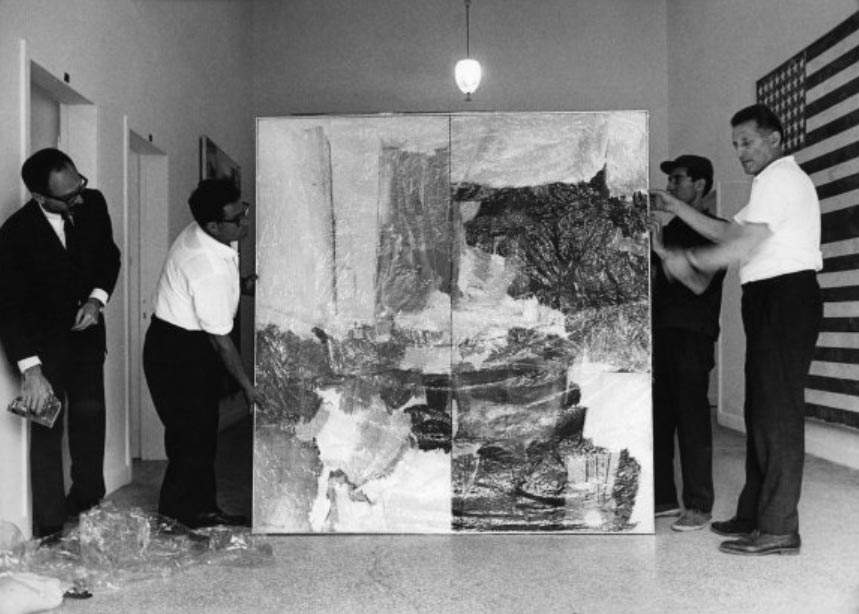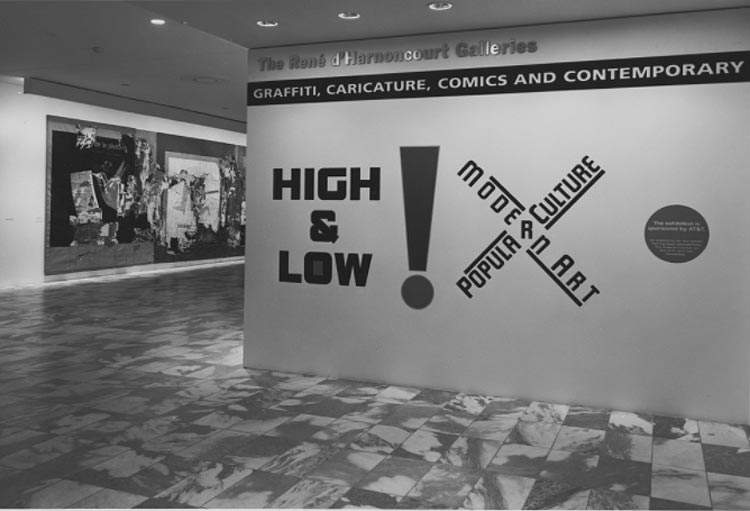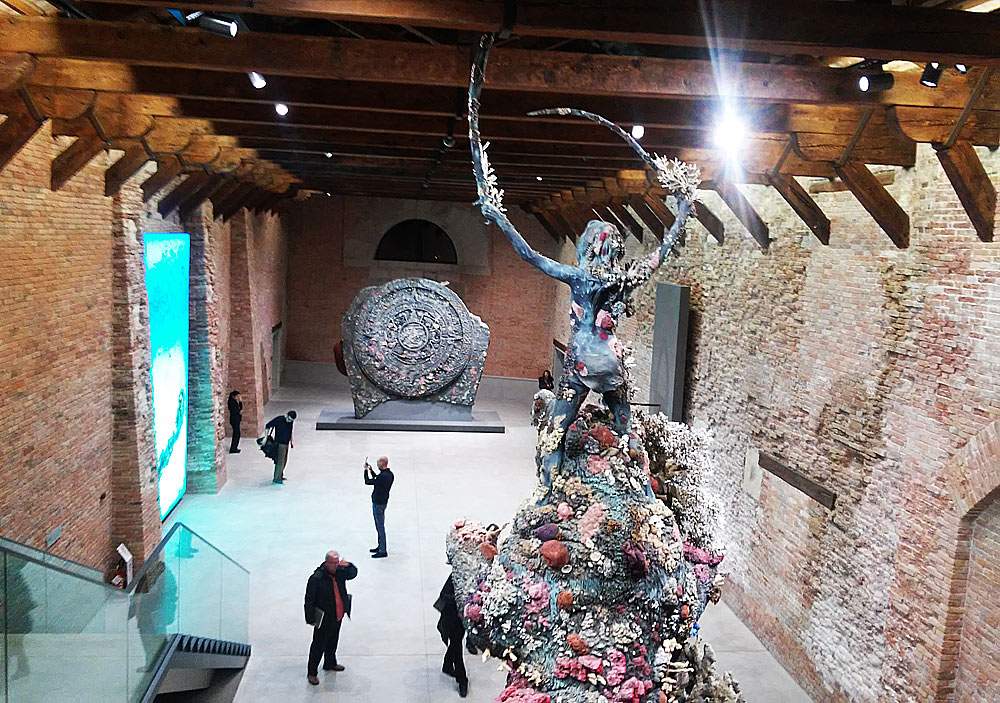One can die of art easily. This is the starting point of Per non morire d’arte, the new book by Ugo Nespolo, published by Einaudi (152 pages, 12 euros, ISBN 9788806247379). Nespolo, a complete and multifaceted artist and genius (he is also a journalist, designer, sculptor, director, set designer), with his pamphlet performs a crude and almost disconsolate examination of the so-called Artworld: one dies of art, therefore, when one witnesses an empty art immersed in a “creative soup” (the world in which everyone is an artist and everything can be called a work of art) that is, however, emptied of certainties and convictions, devoid of points of reference, where there are no longer theories and theorists capable of dictating the lines of an aesthetic project. According to Nespolo, what we are living through is “the time of the superfluid,” predicted by Duchamp when he warned in 1964 against the damage of overabundant production: we are inundated with works of art devoid of any real cultural significance, and we move within the framework of a contemporary art where, according to the author, even craft (where, by craft, Nespolo means the combination of manual and intellectual ability) seems to have been abolished in the name of a “cheap conceptualism devoid of any depth and appeal,” devoted exclusively to decorativism. More importantly, we move in a world in which contemporary art is subjected to what Nespolo calls the “damnation of price,” according to the axiom “what it costs is worth,” which leads us to evaluate artists and works solely on the basis of their price.
This is the starting point. But how did it get there? In the chapters following the first, in which the author brings the problem into focus, Nespolo compiles a small history of art in the second half of the twentieth century, always opening the chapters with personal recollections. One of the pivotal events that informed the current Artworld was, according to the artist, the success of American artists(Robert Rauschenberg, Jasper Johns, Claes Oldenburg, Frank Stella, Jim Dine and others) at the 1964 Venice Biennale, which also went down in history as the Pop Art Biennale: an event that sanctioned the definitive shift in the world center of gravity of art, from Paris to the United States. The French capital, the author recalls, “had lost artists, collectors, galleries and resources without having time to rebuild a now frayed fabric despite stubborn attempts to try to restore glory to the old avant-gardes with the return of many artists to their homeland.” However, in the face of these stubborn attempts, Europe had no way to put up a real resistance to the “organizational and economic power of the U.S.”Abstract Expressionism, the movement that came to the world’s attention in those years, was fostered, Nespolo explains by referring to the studies of Frances Stonor Saunders, by the political situation of the time: in other words, the art of Pollock and colleagues was promoted (in part through recourse to the CIA and economic potentates) in an attempt to oppose socialist realism with a radically different sign, an eminently American art. Although the operation was somewhat orchestrated, it is nevertheless to be read in a positive light according to Nespolo (he himself was very fascinated by the cues coming from overseas), since “the cultural and political root,” the artist recalls, “had to do with a sort of mutual recognition between American liberals and European liberals” (it was a matter, in other words, of opposing Stalinism which, quoting Massimo Teodori, “still vague in art a demagogic attitude and of the worst social realism”).
The new art coming from the United States therefore triggered a fascination that spread to Europe as well: “the storehouse of the real world now seemed to be at the total disposal of artists who could take elements, icons, fragments from it at will without intellectual limits in a sort of total exaltation of the iconic value of the commodity and also of its power, establishing a possible, happy union of art and life.” To reread the history of those years, however, one has the feeling that thathumus produced a path in which the definition of values and expressive choices would be favored by economic instruments, by the logics of museums guided according to entrepreneurial models, by the construction of an Artworld “all rules and obligations supinely observed by artists, critics, curators and collectors in a tacit and interested gesture of observance and induced respect.”
 |
| The cover of the book |
 |
| Installation of Robert Rauschenberg’s Studio Painting at the 1964 Venice Biennale. Behind, Jasper Johns’s Double Flag |
 |
| The High and Low exhibition at MoMA in 1990 |
 |
| Damien Hirst’s Treasures from the Wreck of the Unbelievable exhibition in Venice in 2017. Ph. Credit Finestre Sull’Arte |
The exaggeration of this model could benefit from the rise of postmodernism, to which the third chapter of the book is devoted, and the weakness of reactions in the European sphere. Postmodernism unhinged the mechanism related to “the possibility of believing in the incessant alternation of novelty after novelty, accomplices of confident optimism and faith in a modernity without end and limits.” nor has resulted in an art that, in the midst of the crisis of the historicist model, rather than seeking models and references in the past, has opened itself up to an overlapping of different elements, to a widespread citationism that has resulted in the loss of the center, with the added idea that everything can be art but nothing is guaranteed to be really art (and if the distinction between art and non-art falls, the distinctions between artistic and everyday matter also fall: a widespread uncertainty about the work of art is thus generated, which is easily found even today). “According to a central thesis of postmodern thought,” wrote Peter Bürger, “in our society, signs no longer refer to a meaning, but always and only to other signs, and we with our discourses no longer grasp something as a meaning, but only move along an endless chain of signifiers.” The result is an art that renounces foundational theorizing and motivation. And this is the situation we are still in: how to get out of it seems to be one of the demands of current art.
The following chapters recount the origins and development of artistic movements and trends that have attempted a reaction: an important role is assigned to theSituationist International, which according to Nespolo was the last true avant-garde in art history. The art of the Situationists, free, ironic, anti-ideological, grotesque, complex, revolutionary, accustomed to the practice of cinema and détournement, founded on solid theoretical assumptions, aimed at “combining revolution with the overcoming of art through a way of life capable of constructing revolutionary situations where one can actually pursue the path toward human freedom against exploitation repression, the alienation of one’s social being” (thus Gianfranco Marelli), was as innovative and lucid as could be seen in those years (’68 was also born in the wake of these experiences), but it would soon enter an irreversible crisis due to both internal and external factors (it failed to avoid succumbing to the spectacle of postmodernism). Other attempts were those made by pataphysics, the science of imaginary solutions, and by Fluxus, to which the following sections of the book are devoted.
We return to the events that shaped the contemporary art world with the exhibition High & Low. Modern Art and Popular Culture held at MoMA in 1990: a chapter of Per non morire d’arte is thus devoted to the abolition of the boundary between high and popular culture. “Widespread art,” Nespolo argues, “has found expression in the postmodern perspective, which has translated into free play the interpenetration of art and life in the most varied experiences, without any limits. Historicist dogmatism has been overturned into a ruleless possibilism that has broken all boundaries even between genres, merging word, image, sound.” Contamination also concerns high culture and popular culture: the new paradigm of widespread art (not only by means of its technical reproducibility: Walter Benjamin was the first to speak of the loss of the aura of the work of art), with crossbreeding between genres, has nevertheless resulted, according to Nespolo, in “a possibilism without rules” that has broken all boundaries but has led to a “freedom without direction.”
How to react? In the eighth and ninth chapters, Nespolo seems to point to a couple of directions. The first is the escape into the minimal: against the gigantism and jumbling of certain art (the author gives the example of Damien Hirst’s celebrated Treasures from the Wreck of the Unbelievable exhibition) the answer, Nespolo suggests, is “the beauty of the ’portable,’” rereading Duchamp in whom the author sees a forerunner of “travel things,” that is, “works that can be consulted anywhere , easily disguised and minimal, truly ephemeral things to be concealed in briefcases so akin to the samplers of elegant commercial agents,” the author manifesting an intention to transform himself into a celibate machine, the idea of “remaining a free and delirious man, absolved of the burdens so heavy with life’s obligations.” The second direction is the exit from the fences drawn by the art system toward free territories, far from the reasons of the market: the example is that of avant-garde cinema (“the cinema,” Nespolo writes thinking back to his 1960s self, “appeared to me as an open field, a concrete possibility of research and, at the same time, a playful experience, a natural extension of artistic production and a language only apparently light capable of bending and giving life to different experiences”).
If the reaction is about artistic practice, however, there is another problem: the market of a system built on “arbitrary and senseless profit that feeds the speculative greed of collectors, dealers and artists whose attitudes, often arrogant and theatrical, have been able to make repugnant and vulgar poses that are mostly only exterior and frigid.” And this has been possible, Nespolo believes, because economic value is rooted in the soil of postmodernity, on which everyone is an artist: and if the distinction between art and non-art falls away, quality suffers. “Every element of the visual and the existing,” the artist writes, “can potentially be classified as a work of art as long as the object-material or immaterial-is formally taken through a decision-making event in a process of endless instrumental aestheticization. A voracious economic system in which works of art easily mutate into pretexts indispensable to the system’s needs can only demand rapid alternation and substitution of products, the same one that regulates and governs the economic laws of commodities all and their slender temporal life.” Art is thus bound to a mercantile system in which works have become capital goods, mostly stored in purpose-built warehouses: most works do not even see the wall. What to do. The ways out, Nespolo concludes, seem “narrow and very lackluster.” We need to ask ourselves whether art can live and thrive in a world in which it has become a commodity, a bargaining chip, and whether in essence it can still count for something to the world: and in this picture “the only medicine and remedy has the form of refuge in the bosom of that melancholy turned to the world, that which in Dürer turns toward interiority as a form of concentration, that Besonnenheit, conscious reflection, suggested by the German historian Aby Warburg in which modern man crystallizes.”
 |
| Contemporary art in the time of superciliousness. Ugo Nespolo's new book |
Warning: the translation into English of the original Italian article was created using automatic tools. We undertake to review all articles, but we do not guarantee the total absence of inaccuracies in the translation due to the program. You can find the original by clicking on the ITA button. If you find any mistake,please contact us.